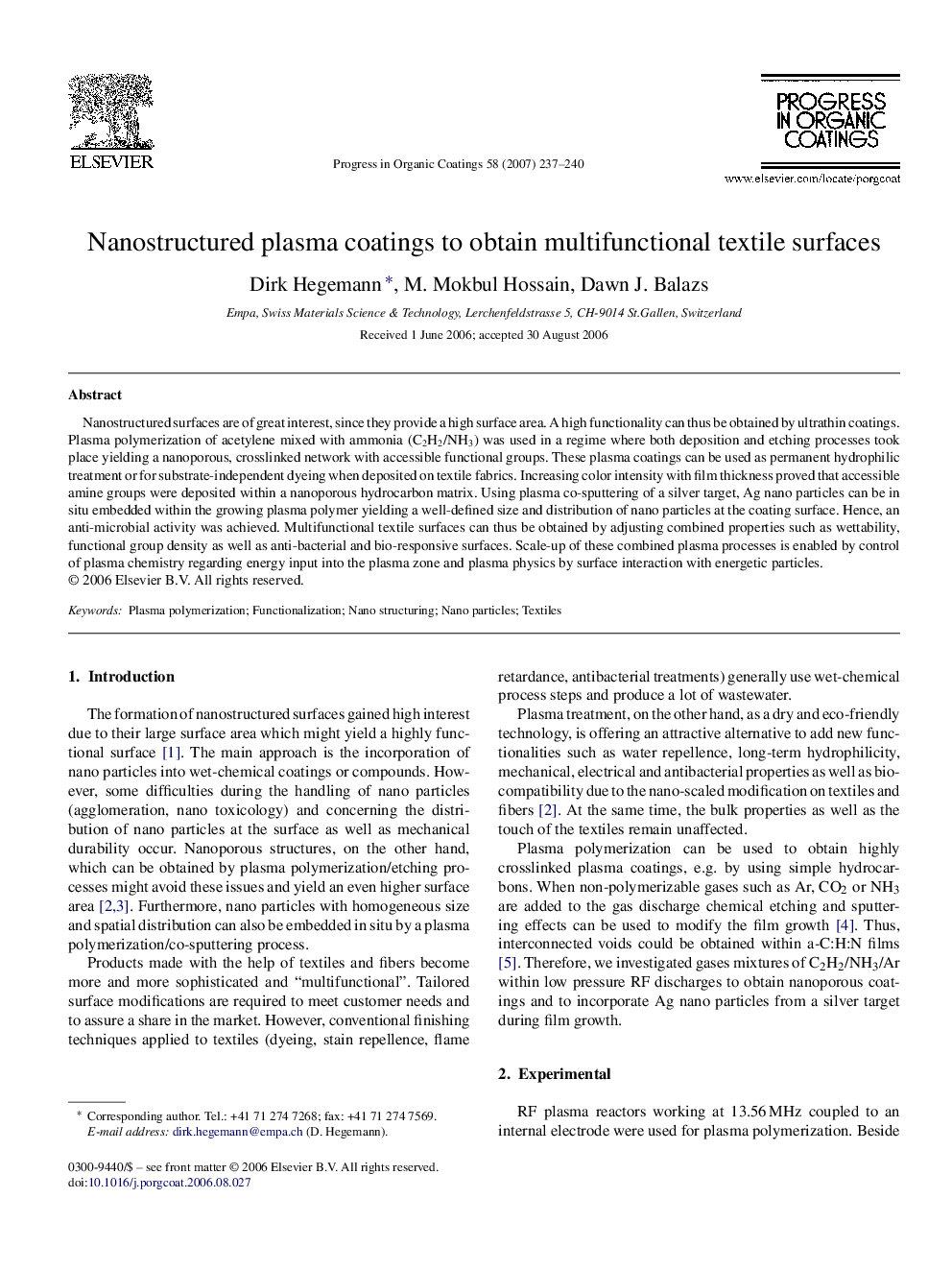| Article ID | Journal | Published Year | Pages | File Type |
|---|---|---|---|---|
| 693578 | Progress in Organic Coatings | 2007 | 4 Pages |
Nanostructured surfaces are of great interest, since they provide a high surface area. A high functionality can thus be obtained by ultrathin coatings. Plasma polymerization of acetylene mixed with ammonia (C2H2/NH3) was used in a regime where both deposition and etching processes took place yielding a nanoporous, crosslinked network with accessible functional groups. These plasma coatings can be used as permanent hydrophilic treatment or for substrate-independent dyeing when deposited on textile fabrics. Increasing color intensity with film thickness proved that accessible amine groups were deposited within a nanoporous hydrocarbon matrix. Using plasma co-sputtering of a silver target, Ag nano particles can be in situ embedded within the growing plasma polymer yielding a well-defined size and distribution of nano particles at the coating surface. Hence, an anti-microbial activity was achieved. Multifunctional textile surfaces can thus be obtained by adjusting combined properties such as wettability, functional group density as well as anti-bacterial and bio-responsive surfaces. Scale-up of these combined plasma processes is enabled by control of plasma chemistry regarding energy input into the plasma zone and plasma physics by surface interaction with energetic particles.
